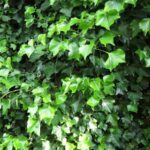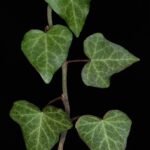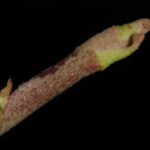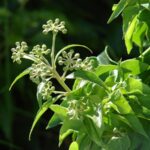On the Lookout for Non-Native Invasive Plants: English Ivy
go.ncsu.edu/readext?1095671
en Español / em Português
El inglés es el idioma de control de esta página. En la medida en que haya algún conflicto entre la traducción al inglés y la traducción, el inglés prevalece.
Al hacer clic en el enlace de traducción se activa un servicio de traducción gratuito para convertir la página al español. Al igual que con cualquier traducción por Internet, la conversión no es sensible al contexto y puede que no traduzca el texto en su significado original. NC State Extension no garantiza la exactitud del texto traducido. Por favor, tenga en cuenta que algunas aplicaciones y/o servicios pueden no funcionar como se espera cuando se traducen.
Português
Inglês é o idioma de controle desta página. Na medida que haja algum conflito entre o texto original em Inglês e a tradução, o Inglês prevalece.
Ao clicar no link de tradução, um serviço gratuito de tradução será ativado para converter a página para o Português. Como em qualquer tradução pela internet, a conversão não é sensivel ao contexto e pode não ocorrer a tradução para o significado orginal. O serviço de Extensão da Carolina do Norte (NC State Extension) não garante a exatidão do texto traduzido. Por favor, observe que algumas funções ou serviços podem não funcionar como esperado após a tradução.
English
English is the controlling language of this page. To the extent there is any conflict between the English text and the translation, English controls.
Clicking on the translation link activates a free translation service to convert the page to Spanish. As with any Internet translation, the conversion is not context-sensitive and may not translate the text to its original meaning. NC State Extension does not guarantee the accuracy of the translated text. Please note that some applications and/or services may not function as expected when translated.
Collapse ▲There are a wide variety of non-native invasive plant species that have taken hold in Madison County. These plants cause harm to the environment, as well as potential harm to human, animal, and plant health in the preexisting environment. Some of these damages can be caused by overtaking beneficial native plants in the ecosystem, act as vectors for diseases and other invasive species, such as invasive insects, and are unhealthy or potentially toxic to native animals. In this series, we will discuss identification and control of these prevalent invasive plants.
Identifying English Ivy
English ivy (scientific name Hedera helix) is a climbing, woody evergreen vine originating from Europe. This invasive vine also has the ability to form dense groundcover when growing across the forest floor, and its appearance can vary slightly depending on the growth form it has taken. When it grows as groundcover, the woody stems remain small, while the stems of english ivy growing as a vine can grow to be up to several inches in diameter as it climbs up trees. Leaf shape of english ivy can also vary depending on its location and its age, making it occasionally difficult to identify. Most often, this plant is seen with leaves that have three to five lobes, this shape occurring in the plant’s preferred environment of partial or fully shaded areas, with acidic loamy soils. Despite its preferences, English Ivy will grow in a wide variety of conditions, including full sun, which creates an unlobed leaf in an oval shape, as well as soils of clay, sand, and even shallow rocky soils alongside its preferred silt/loam types of soil, and can grow in both neutral and basic soil pHs alongside its preferred acidic pH levels. The leaves are dark green in color and appear to have textures ranging from glossy to waxy to almost leathery, and grow in an alternating pattern along the stems. In the summertime, mature vines can produce tiny, greenish yellow flowers less than an inch in diameter, which later produce dark purplish black berry-like fruits that are often eaten by songbirds, which aids in the spread of this invasive species to new areas. If these berries are not consumed by birds, they will remain on the ivy throughout the winter.
This invasive plant is toxic to people, pets, and livestock. Direct skin contact with sap can cause skin irritation, redness, itching, and potentially even blisters. Ingesting the berries from English ivy can cause some severe symptoms as well, including but not limited to a burning sensation in the throat, fever, rashes, vomiting, diarrhea, and abdominal pain. Consuming any of the foliage of this plant is even more toxic than the berries, causing the listed symptoms and several others more severely. When doing manual removal methods of English ivy, be aware of these potential problems, and take precautions to protect your skin from potential reactions, and wash your skin well when finished.
- Donald Hobern CC BY 2.0 Image retrieved from NC Extension Gardener Plant Toolbox
- Leaves and stem (The Meadows, Charlottesville, VA)-Late Winter Douglas Goldman, USDA CC BY-NC 4.0 Image retrieved from NC Extension Gardener Plant Toolbox
- Stem and end buds (The Meadows, Charlottesville, VA)-Late Winter Douglas Goldman, USDA Image retrieved from NC Extension Gardener Plant Toolbox
- Flowers Forest and Kim Starr CC BY 2.0 Image retrieved from NC Extension Gardener Plant Toolbox
How It Spreads
English ivy is native to Europe, and was originally brought to the United States as an ornamental vine, popularized by its evergreen glossy leaves, and low maintenance traits. Its previous popularity has contributed to its wide spread throughout the eastern and southern regions of the United States. This invasive species poses dangers to both disturbed and undisturbed areas due to its ability to grow as both a climbing vine and groundcover. When growing as a groundcover, it creates a thick mat of leaves and foliage that blocks any sunlight from any plants growing beneath them, effectively smothering out the native growth that is more beneficial to the forest. When growing in its vine form, English ivy also effectively kills trees from their base upward. It achieves this through the intense growth patterns of its vines climbing across limbs until it fully covers the branches, blocking photosynthesis until the entire tree is smothered. The weight of the vines on these dead or dying trees also makes them more susceptible to wind damage from storms or in high-wind areas, increasing potential dangers to homes, roadways, and other public areas. Any climbing vines on or near homes have the potential to cause damage to gutters, shutters, aluminum siding, and other home features. This plant also has the ability to sprout new plants from cuttings, meaning it can spread during mechanical removal if it is not properly disposed of and allowed to take root from the cuttings.
Controlling English Ivy
There are several methods of control that can be used to handle English ivy at various stages of infestation. If the infestations are small, the invasive plant can be pulled by hand, but due to its ability to regrow from cuttings, each pulled plant must be bagged and removed from the area for disposal. Large infestations can not be effectively controlled by hand pulling, usually requiring a combination of chemical treatment methods to successfully remove it from the environment. When dealing with a large infestation, different herbicide application methods are necessary to control different growth patterns of English ivy.
When combating against the vine form of this plant, using a method called the cut-stump method can be effective to selectively target the vines climbing the trees. This method involves cutting the vines off as close to the ground as possible, and then immediately after cutting, spray the revealed stump with a solution of 50% triclopyr. Be sure the stump is sprayed within three minutes of being cut, as the turgor pressure from the plant’s vascular system will help draw the chemical into the root systems for a more effective kill. Turgor pressure is caused by the pressure of water within the plant cells that allows the plant to keep its upright and rigid structure, as well as aiding in the flow of nutrients across the expanse of the plant, from the tips of the leaves to the ends of the roots underground. The cut-stump method is a viable method of chemical control for these viney ivy plants as long as the ground is not frozen, allowing for it to be used throughout most of the year in our region.
When English ivy is growing as groundcover, it can be treated using a foliar spray sprayed over the leaves of the invasive plant. To use this method, there are two options of herbicide that can be used. For a non-selective spray treatment, usually only ideal in situations where English ivy has smothered out all other beneficial plant life, use a solution of 4% glyphosate plus a 0.5-1% addition of a non-ionic surfactant to help the herbicide application stick to the leaves and improve the efficacy of the application. For a selective spray treatment, or one that will only target woody plants like English ivy, use a 2% solution of triclopyr plus a 0.5% addition of non-ionic surfactant to help the herbicide application stick and improve the efficacy of the spray program. Be sure to thoroughly wet the leaves when using a foliar spray technique to ensure that the plant is soaking up enough of the herbicide treatment to be effective. Due to English ivy’s status as an evergreen, a foliar application can be used year-round as long as the temperature has remained about 55-60 degrees Fahrenheit for several days, signaling the plant to move nutrients throughout its system. It is also important to note that the different herbicide active ingredients chosen are variable in their effectiveness at different times of the year. The glyphosate solution is best used during the spring and summer months of the year, while the triclopyr solution is best used during the summer and fall, and it is possible that repeat treatments will be necessary to completely control English ivy.
No matter what treatment is used, or the types of infestations they are used on, make sure the previously infested areas are monitored for any potential regrowth so it can be controlled before it establishes itself strongly again.
If you have any other questions about identifying or controlling English ivy, please contact the Madison County Cooperative Extension Center at (828) 649-2411, or reach out to me directly at peyton_duckett@ncsu.edu.
Citations
Invasive Species Leaflet. (2010, April). NCDA&CS, Forest Service Division.
North Carolina State University. (n.d.). Hedera helix. North Carolina Extension Gardener Plant Toolbox.







